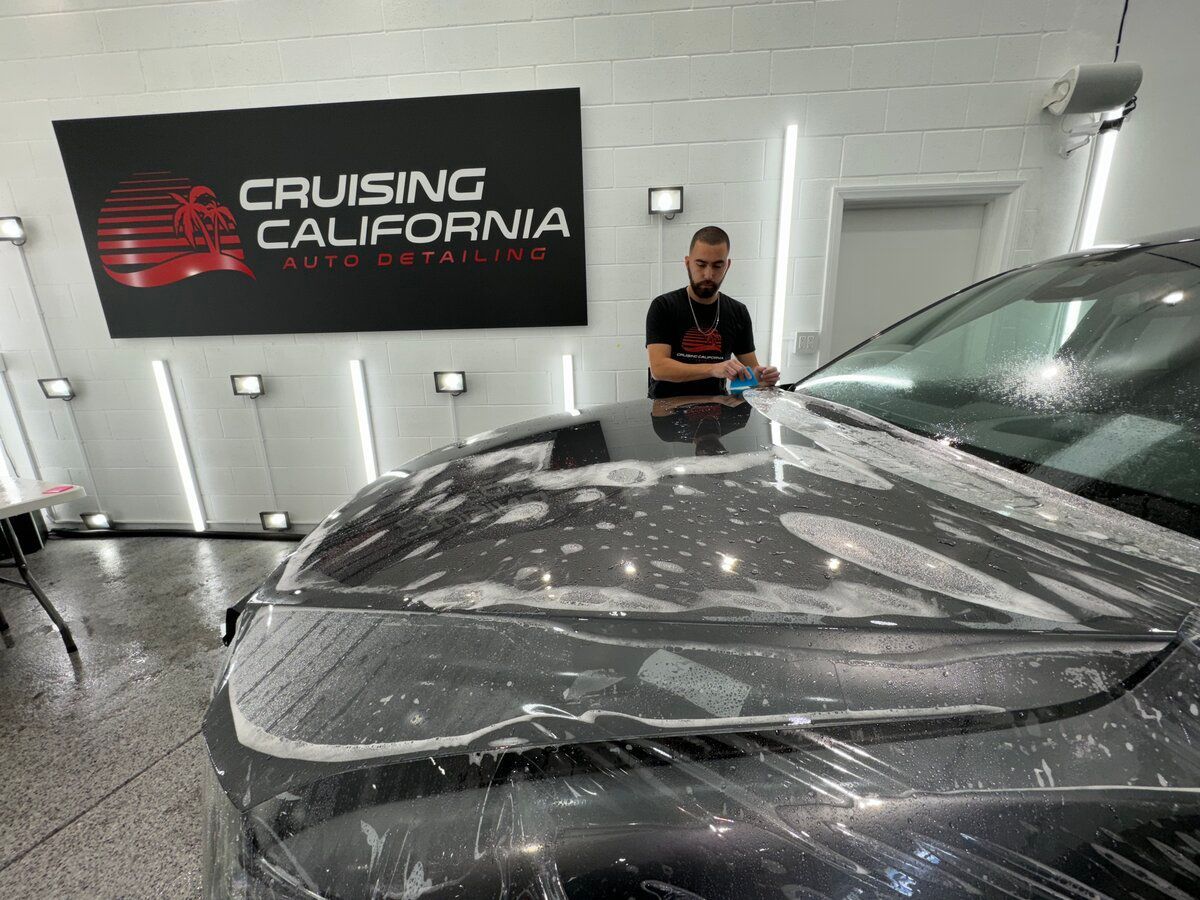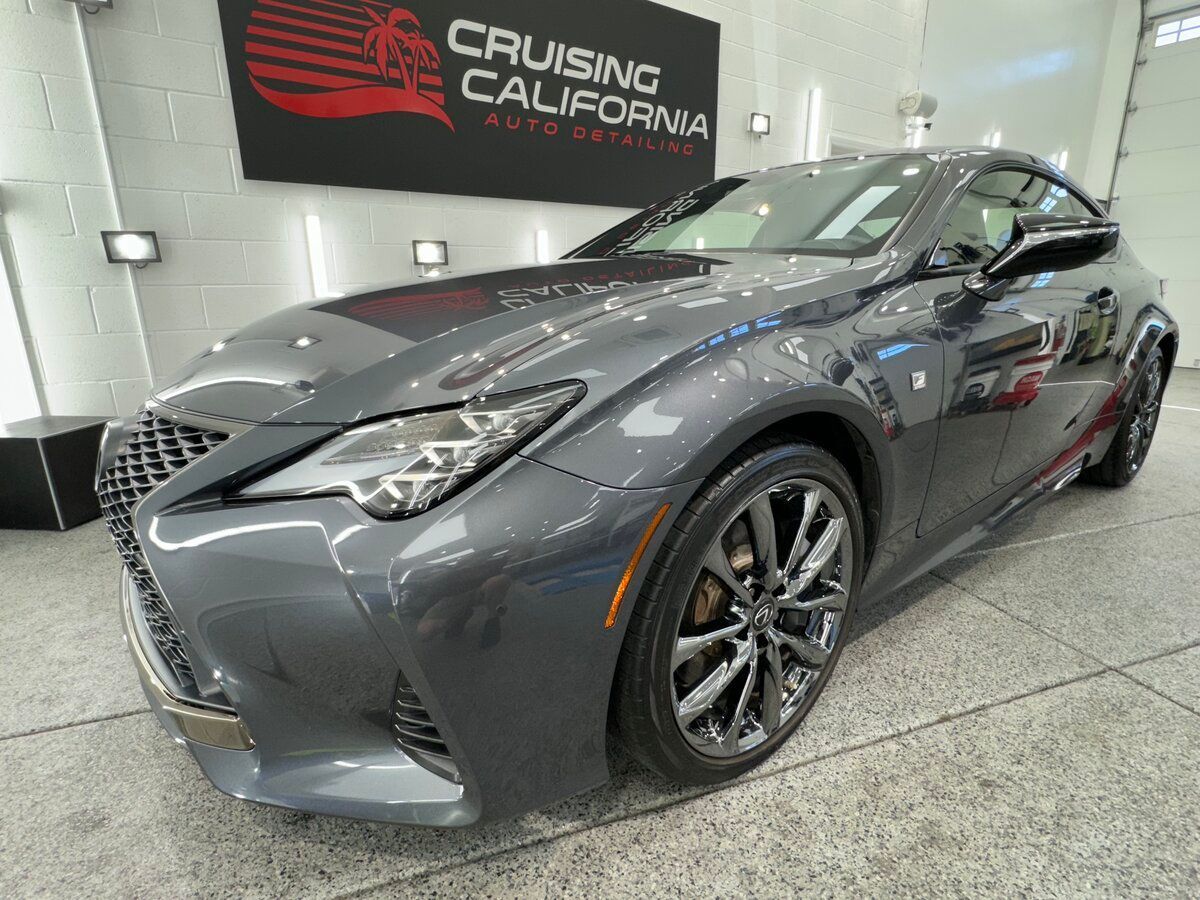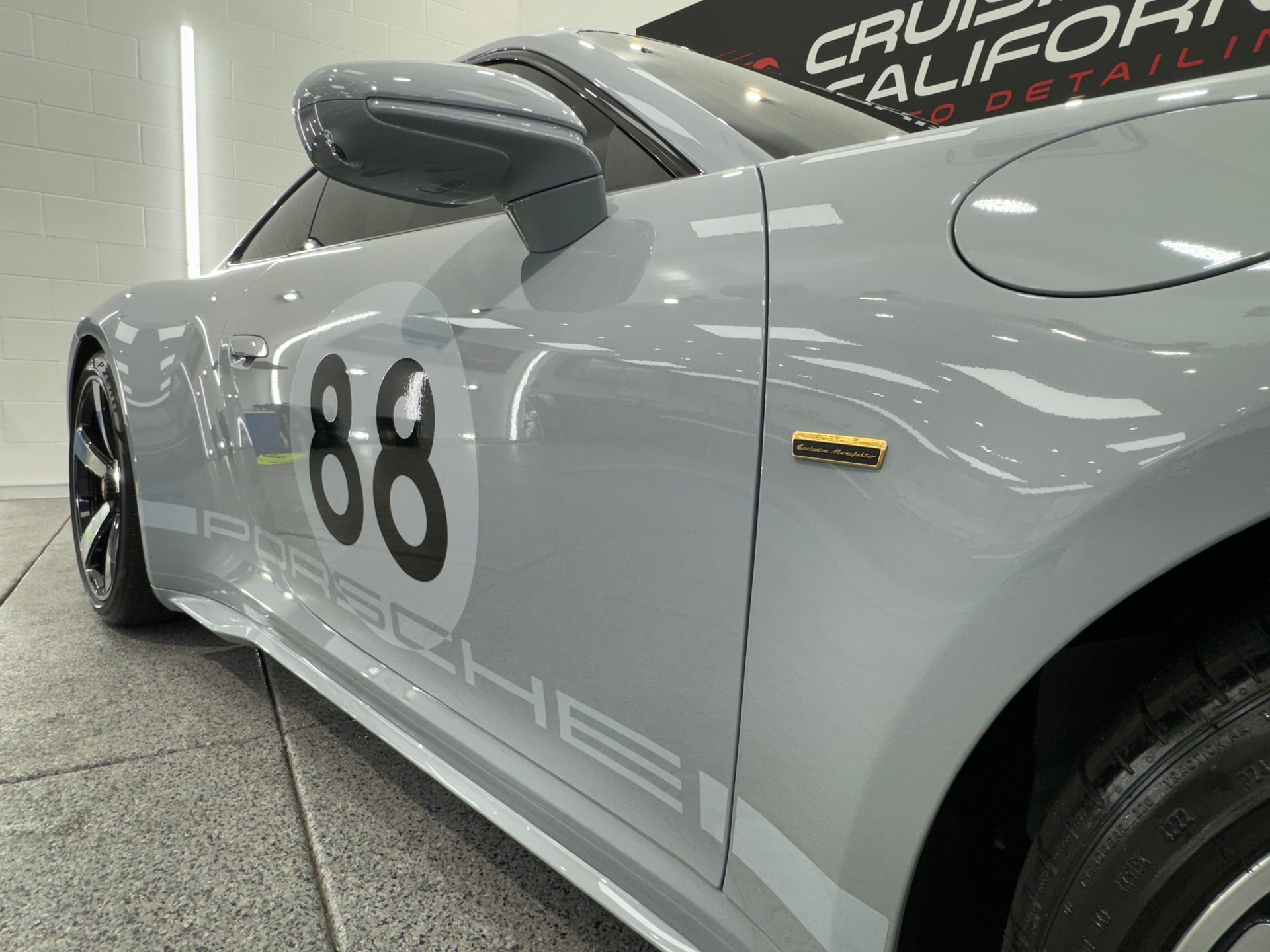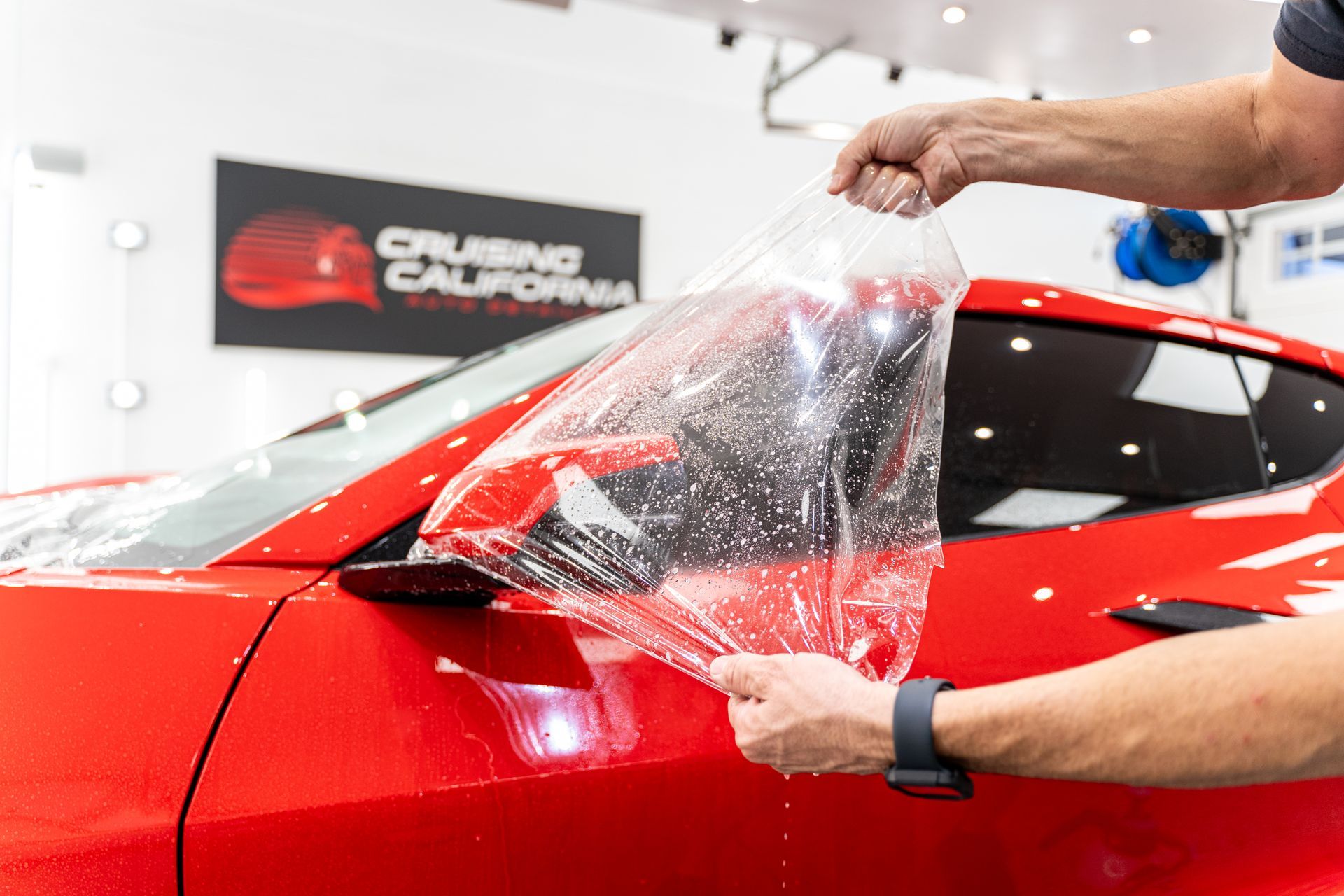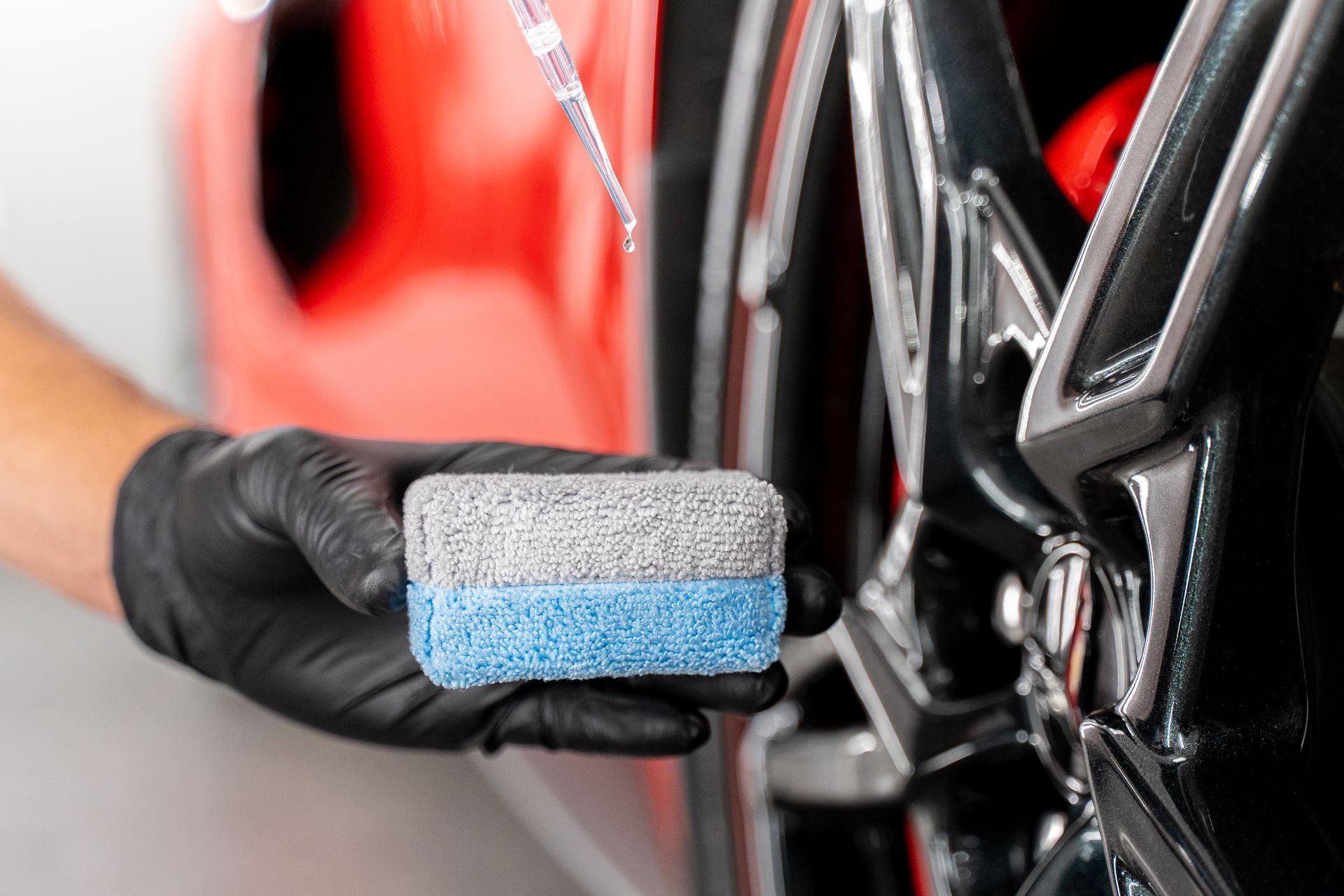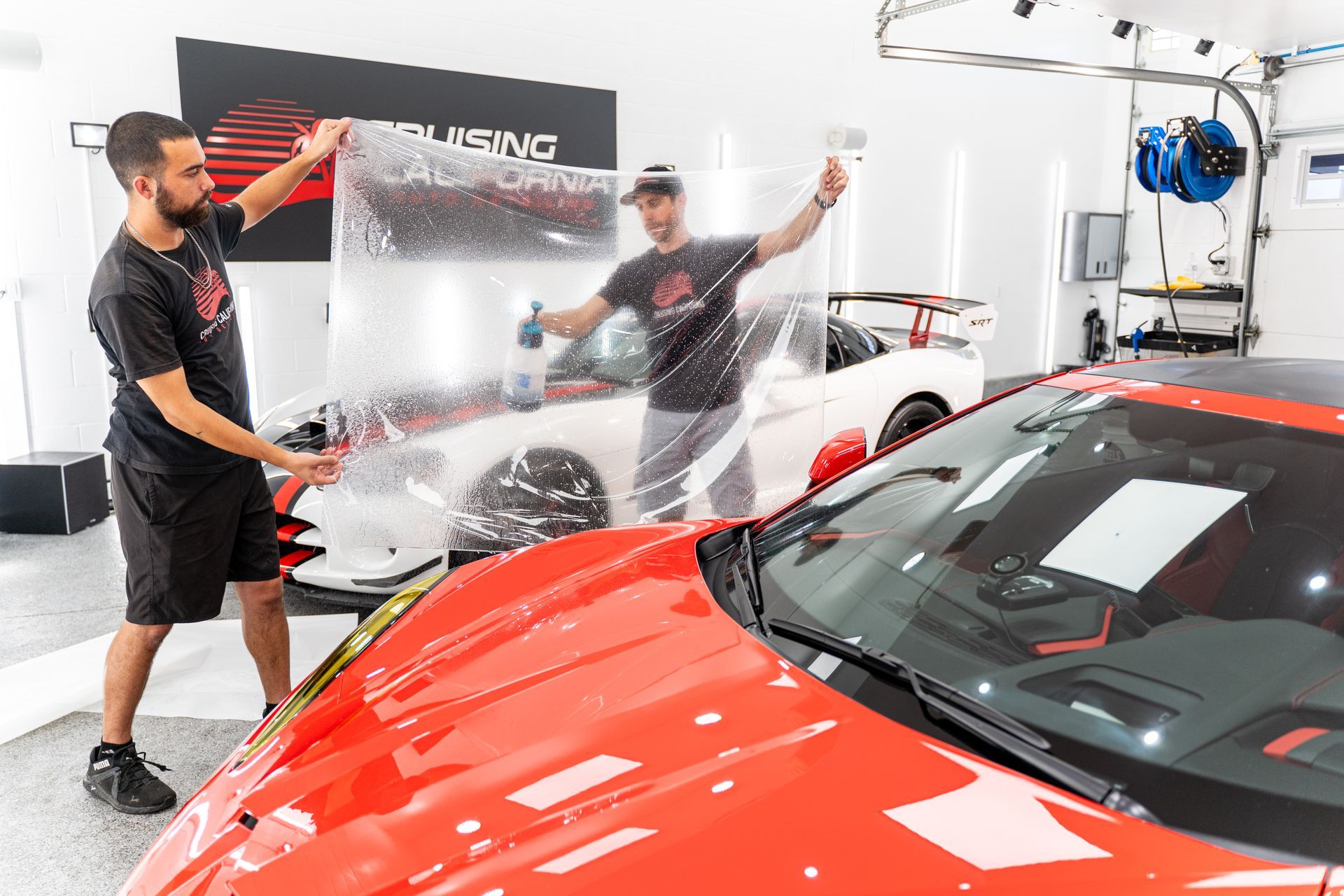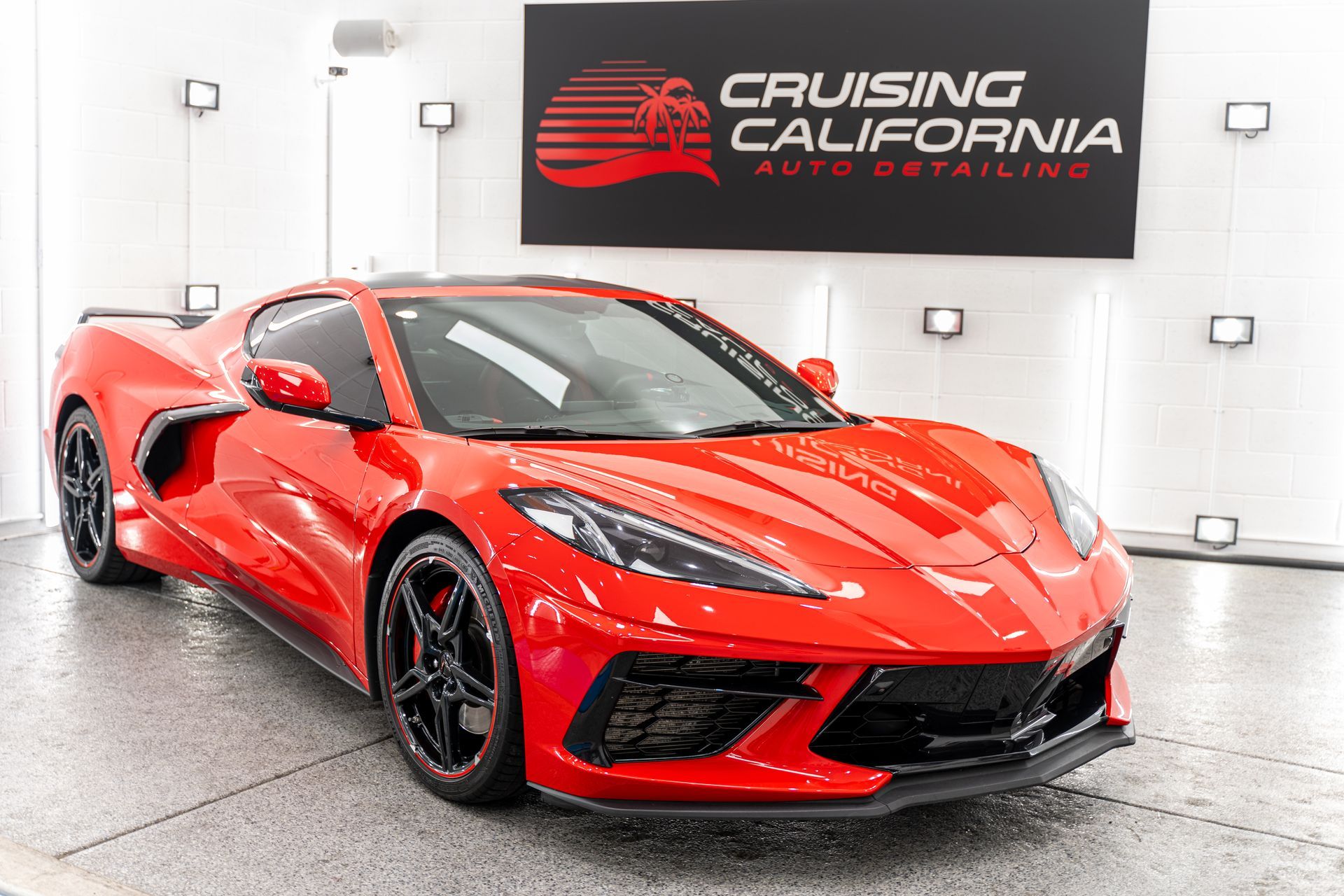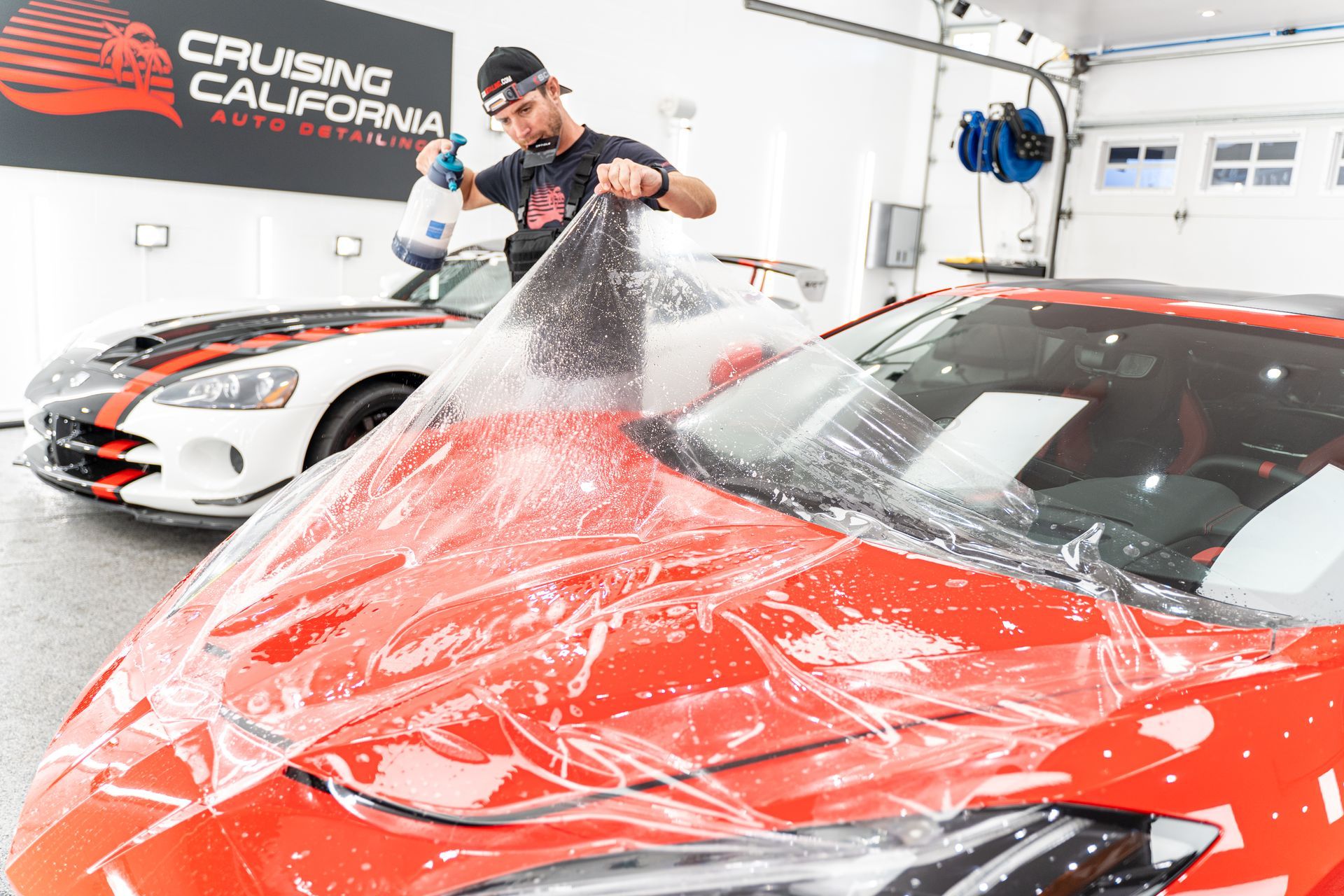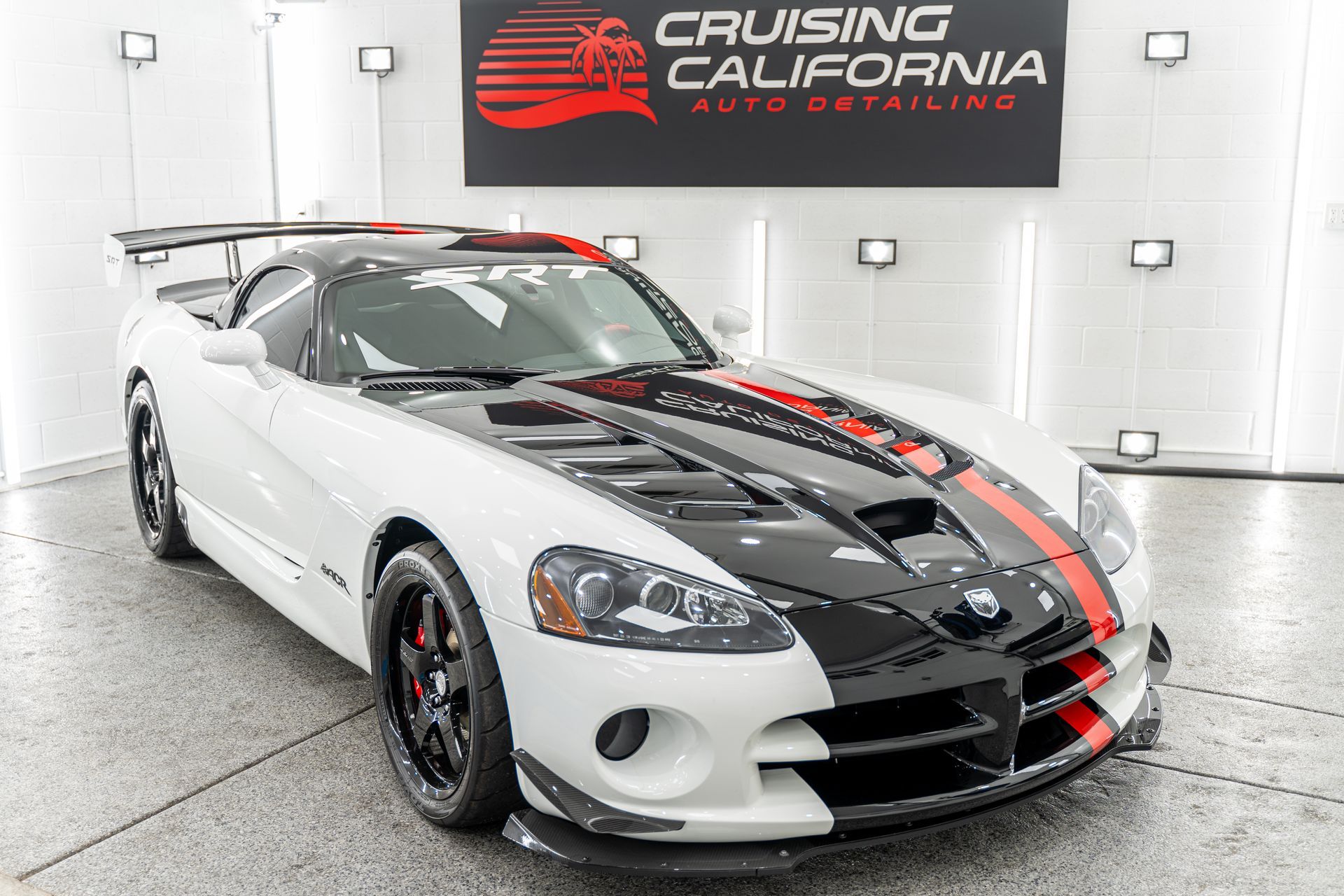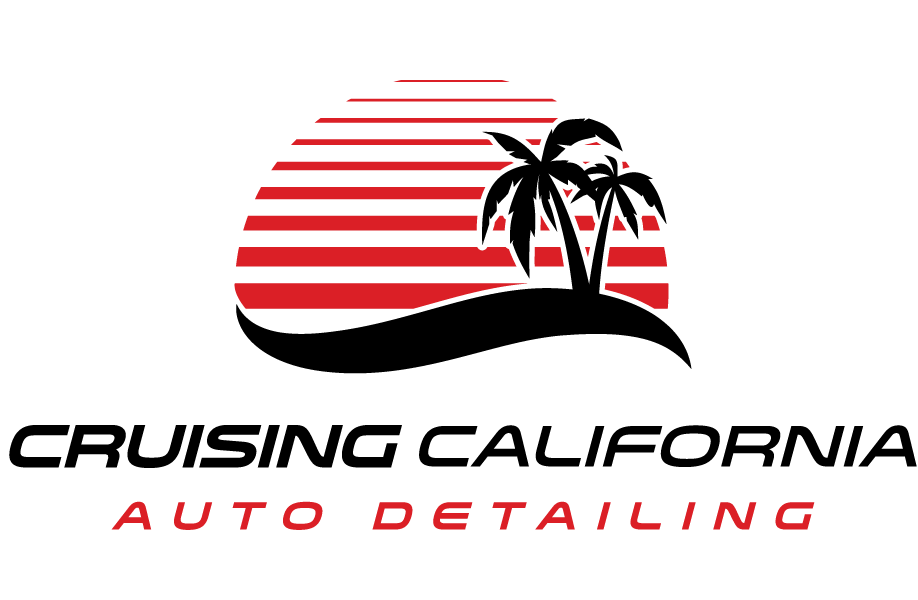Every car enthusiast knows that keeping a vehicle in perfect condition is no small feat. Whether it's attending auto clubs or displaying your pride and joy at car shows, protecting that flawless finish from everyday enemies like rock chips, scratches, and environmental contaminants often feels like an uphill battle. Here’s where professional paint protection film steps in as a game-changer.
Professional PPF, or paint protection film, is a high-quality, clear polyurethane material applied to a vehicle's exterior to protect against scratches, chips, and environmental damage. It guarantees the best protection by offering self-healing properties, UV resistance, and durability, ensuring that your vehicle's paint remains pristine for years.
What is Professional PPF?
Professional paint protection film is a high-quality, clear material that acts as a protective barrier on your vehicle's surfaces. Made chiefly from thermoplastic urethane polymer, this film is not merely a shield against minor wear and tear; it’s an investment in the longevity and aesthetic appeal of your car. When applied correctly, a paint protection film provides an almost invisible layer that helps maintain a vehicle's pristine condition.
Beyond just protection from scratches and dirt, professional PPF serves as a guard against a spectrum of environmental threats. Everyday encounters such as road debris, gravel from construction sites, bird droppings, and tree sap can leave marks on paint that may be challenging to remove. Without a paint protection film, these factors could lead to costly repainting and diminished resale value. However, with a durable layer of PPF in place, any potential damage can often be minimized or completely avoided.
One particularly appealing feature of professional paint protection film is its self-healing capabilities. Self-healing refers to the film's unique ability to mend minor scratches and swirl marks when heat is applied. For instance, if you park your car in the sun after a long drive and discover tiny blemishes on the hood, those imperfections can vanish as the heat softens the film and restores smoothness. This convenience saves you time and resources while maximizing your vehicle's visual quality.
Beyond protection and aesthetics, another compelling aspect of professional paint protection film is its ease of maintenance. Keeping your vehicle clean becomes much simpler with a protective layer safeguarding against dirt buildup. A gentle wash with soapy water typically suffices. Plus, a paint protection film doesn’t require waxing like traditional paint surfaces might; thus, it streamlines upkeep without skimping on that fresh-car glow. Investing in professional PPF ensures your vehicle remains in excellent condition long after it leaves the showroom floor, allowing you to enjoy driving without worrying about maintaining that flawless appearance.
Benefits: Scratch Resistance and Self-Healing
- Scratch Resistance: One of the most remarkable aspects of professional paint protection film is its ability to act as a protective shield against everyday wear and tear. The film provides a sacrificial barrier that absorbs minor scratches, dings, and abrasions that would otherwise mar your vehicle's paint job. This means you can feel more at ease driving through gravel roads or parked in tight spaces where door dings are common. Imagine not having to fret over every little scratch; that’s the peace of mind a paint protection film offers.
- Self-Healing: The self-healing properties of paint protection films arise from advanced elastomeric polymers, which enable the film to respond adaptively to environmental changes. If minor scratches or swirls do occur, exposure to heat—whether from sunlight or an external heat source such as a hairdryer—will trigger the film's remarkable ability to revert to its original smooth state. Consequently, even if your vehicle endures its fair share of scrapes from branches or other objects, these unsightly marks will gradually diminish with time.
This combination of scratch resistance and self-healing not only keeps your vehicle looking pristine but also ensures you maintain its resale value longer. With such remarkable features, it's clear that protection goes hand in hand with enhancing the overall appearance of your vehicle while increasing its longevity.
Aesthetic Enhancements: Gloss and Color
When considering the installation of a paint protection film, one might primarily focus on its protective qualities. However, it’s equally important to realize that professional PPF dramatically enhances the visual allure of your vehicle. The first thing you will notice is how a paint protection film accentuates the car's existing color while adding a vibrant, high-gloss finish that can make your vehicle truly stand out.
- Enhanced Gloss: For those who appreciate a head-turning shine, adding a layer of PPF can elevate your vehicle's glossiness to exceptional levels. This transparent film doesn’t just cover the surface; it acts as a magnifying glass for the car’s paint. The science behind this enhancement lies in how the film reflects light. By using high-quality materials, the paint protection film ensures that light bounces off its surface more efficiently, resulting in an impressive shimmer that draws attention from every angle.
- Customized Color: Many brands now offer colored and matte options for PPF, allowing enthusiasts to tailor the appearance of their vehicles even further. For instance, reputable brands provide films not only in high-gloss finishes but also satin and matte options, enabling drivers to craft a unique look for their rides. Additionally, these options often come with special effects like metallic flecks or pearlescent hues to give your car a one-of-a-kind sparkle. This customization doesn't simply add flair; it also creates an aesthetic that reflects individuality and care in presentation.
By harmonizing protective benefits with aesthetic enhancements, vehicle owners can enjoy not only beauty but also durability in their cars.
DIY vs. Professional Installation
When it comes to protecting your vehicle’s paint with paint protection film (PPF), choosing between a DIY approach and professional installation is an important decision. Both options offer unique benefits depending on your goals, budget, and skill level.
DIY Installation
For many vehicle owners, the idea of installing PPF themselves can be quite appealing. Not only does it promise savings on labor costs, but it also presents an opportunity to acquire a new skill. However, DIY installation requires careful planning and execution. DIY kits are widely available, containing all the necessary materials to achieve that high-gloss finish you desire, but they come with their own set of challenges. Engaging in this endeavor means diving into a world of patience, precision, and sometimes frustration.
When embarking on a DIY project, it’s essential to equip yourself with the right tools. Aside from the paint protection film itself, you'll need tools like a heat gun or hairdryer for stretching the film, a squeegee to eliminate air bubbles, and possibly some soapy water for a smoother application process. Each piece of film must be carefully measured and cut, with great attention paid to alignment as you lay it down on your car's surface. Common pitfalls arise quickly when attempting DIY installation. Mistakes such as bending the film improperly or misaligning edges can mar the end results, leading to visible air bubbles or unsightly wrinkles marring your vehicle’s aesthetic appeal.
Professional Installation
Opting for professional installation adds layers of assurance that DIY often cannot match. Professionals have honed their skills through extensive training and experience, employing specialized tools designed specifically for applying paint protection film flawlessly. They know how to handle various vehicles and manipulate the material under different conditions to avoid pesky air bubbles and wrinkles that plague amateur efforts. Your choice will ultimately reflect your confidence level, budget considerations, and desire for a flawless finish.
Why Choose Trained Installers?
Opting for trained installers ensures that you receive not just a product but a promise of quality and durability for your vehicle's protection film. The expertise brought by trained professionals is invaluable; it translates directly into the quality of work you can expect. When skilled technicians apply PPF, they do so with a level of precision and care that DIY efforts often cannot achieve.
- Expertise and Experience: Trained professionals undergo rigorous training and extensive certification processes before they are allowed to handle PPF installations. This means they don’t just know how to apply the film; they understand the nuances involved in dealing with different vehicle surfaces, shapes, and materials. Their knowledge helps prevent costly mistakes—like trapping air bubbles or misaligning the film—that could compromise the effectiveness of your investment. Trained installers also have hands-on exposure to various situations during installation, from navigating intricate curves on different car models to ensuring proper adhesion under varying weather conditions. This experience enables them to respond to challenges swiftly, preserving both the integrity of your vehicle's finish and the longevity of the PPF.
- Access to Quality Tools: While skill is essential, considering the tools used is equally important. Professional installers have access to advanced equipment that significantly enhances the installation process. For instance, they use plotters for precise cutting of the film, which means fewer errors compared to using scissors or utility knives at home. These tools create a seamless fit tailored specifically for each vehicle. Additionally, specialized tools like squeegees designed for smooth application are critical in minimizing bubbles and ensuring an even surface without wrinkles. These high-quality resources drastically reduce the risk of user error—a common issue when individuals attempt DIY installations with basic materials.
- Long-Term Value and Support: When you choose trained professionals for PPF installation, you're not only investing in immediate quality; you're also securing long-term value. Many certified installers offer warranties on their work, which guarantees that if any issues arise due to improper installation within a certain timeframe, they will address it at no extra cost. Ongoing support can be invaluable; these experts remain accessible for any future inquiries or concerns regarding your paint protection film's performance. Unlike DIY approaches where one might be left fielding questions alone after installation, having professional backing gives you peace of mind—knowing that you have experts to advise you if any complications do arise down the line.
Understanding these factors highlights the importance of commitment not just to initial quality but also to the enduring advantages of professional service.
Long-Term Advantages: Warranty and Durability
When you invest in professional PPF, you're not just getting a protective film; you're securing peace of mind for years to come. One of the standout features is the comprehensive warranty that accompanies many installations. This isn't merely an afterthought. In fact, many leading manufacturers offer warranties spanning impressive lengths, typically between five and ten years. This ensures your investment is safeguarded against natural wear and tear.
As you think about the financial aspect of maintaining your car, consider how that long-lasting warranty translates into practical terms. A warranty like this does more than just cover potential defects; it emphasizes the enhanced durability of professional-grade paint protection film. It's designed to endure some of the harshest elements without faltering. Road grime, UV rays, tree sap—these are damaging agents that can wear down even the best paint jobs over time. With a well-installed PPF, your vehicle's paint is fortified against these threats.
By understanding both the warranty and durability aspects, it's clear why professional PPF is more than just an added cost—it's an investment in longevity and aesthetic appeal. When considering your vehicle's maintenance strategy, remember that protecting your paint job with professional paint protection film offers cumulative benefits. Not only will you enjoy the visual enhancement of having a sleek, well-maintained exterior for years to come, but you also lessen potential costs related to repainting or fixing damage caused by elements that could chip away at your investment.
Investing in professional paint protection film is undoubtedly a strategic decision that protects your vehicle while enhancing its overall appearance for years to come. With robust warranties and proven durability, this protective film stands out as a necessary addition for conscientious car owners who prioritize care and longevity.
Unbeatable Paint Protection Film Services in El Cajon, CA
For
top-tier paint protection film services in El Cajon, CCA Detailing & Ceramic Coating | PPF offers unbeatable solutions to safeguard your vehicle's finish. Our expertly installed paint protection film provides an invisible shield against road debris, scratches, and environmental damage, all while maintaining your car’s pristine appearance. With a focus on precision and high-quality materials, our team ensures long-lasting defense that keeps your vehicle looking new. Trust us to deliver the ultimate protection your car deserves. Call us at (619) 916-6157 to get started!

